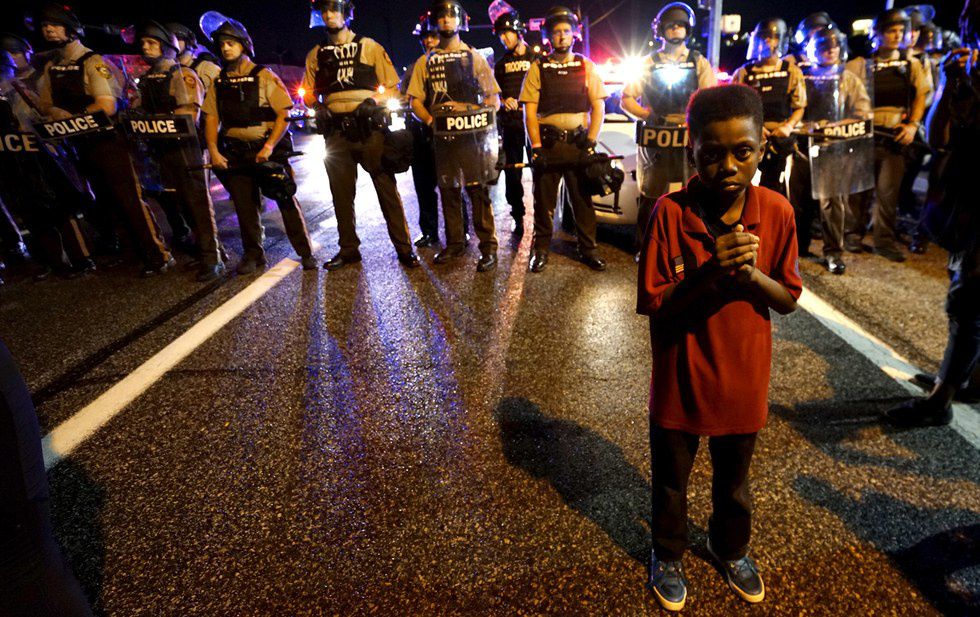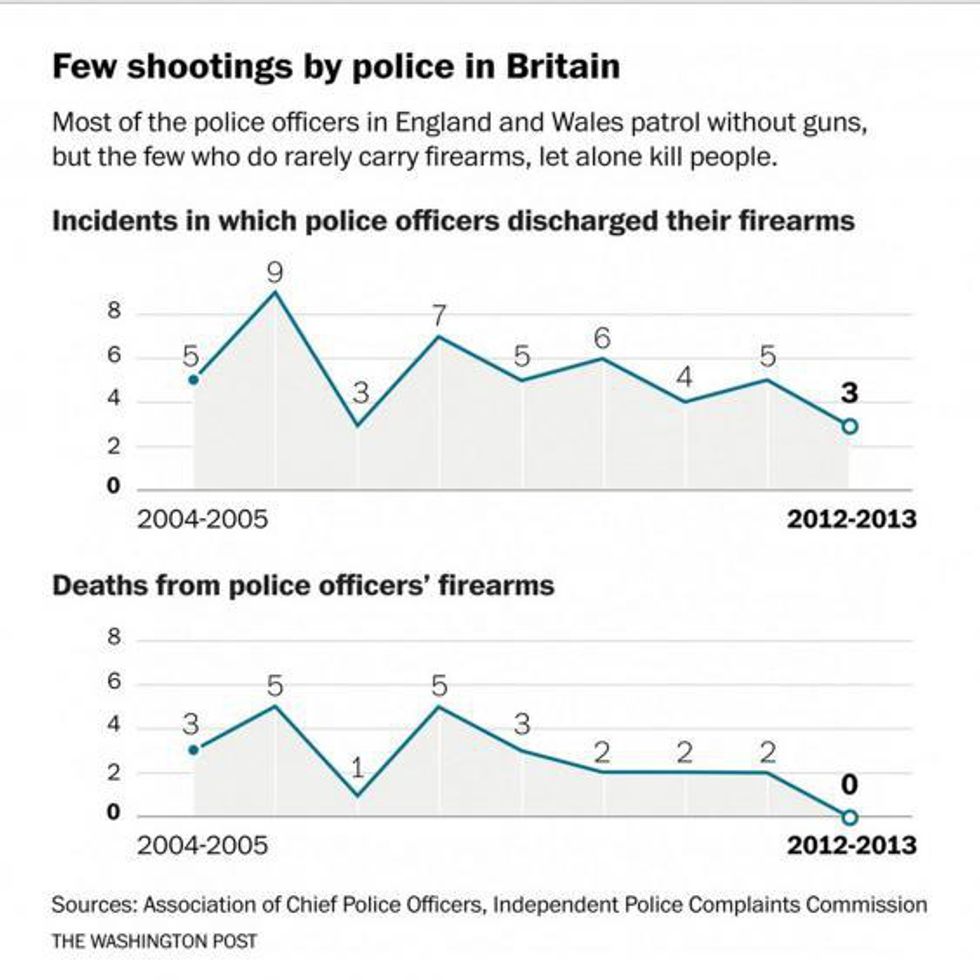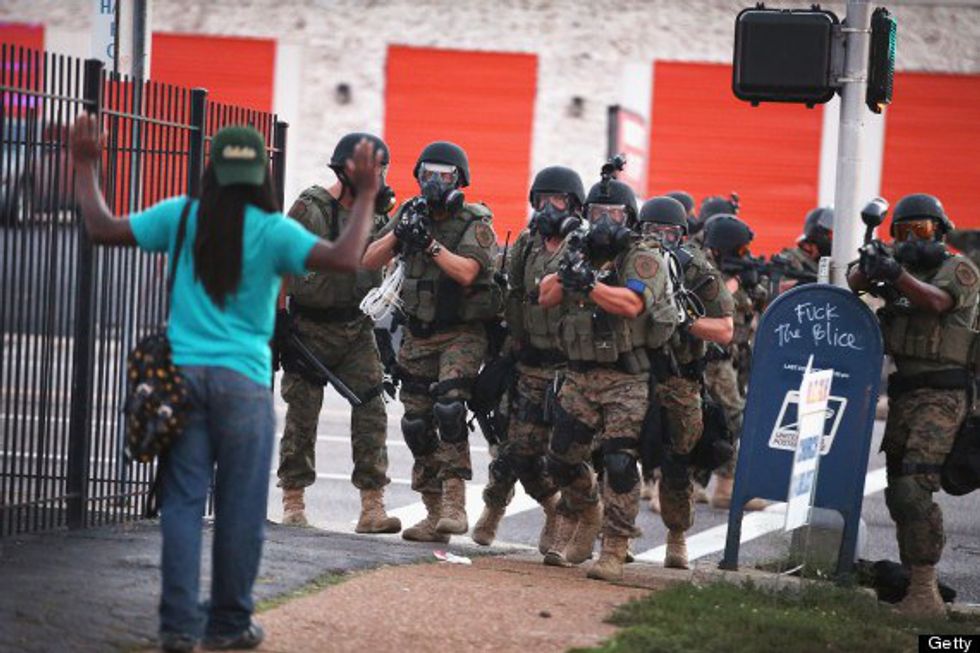After the June shooting in Orlando that killed over 50 people, the need for stricter gun control laws has become more and more dire. It seems as if every day someone is killed due to gun violence, be it a mass shooting or toddlers getting ahold of their irresponsible parents’ gun. However, gun control should not just apply to civilians; after the recent murders of Alton Sterling and Philando Castille, it has become blatantly obvious that the greatest demilitarization must be undergone by American police departments.
Especially after Orlando, the emphasis has been on stricter gun control laws, including a renewal of the federal ban on assault rifles, which expired in 2004, and universal background checks. However, these measures are not enough. Before the original ban had been implemented, assault rifles and other military-style weapons had only accounted for two percent of instances of gun violence; after the ban, this number only went down to 1 percent. Handguns, which account for 80 percent of gun-related murders, are the real danger. Moreover, while background checks are a good idea and should be implemented, it is also very possible that if not regulated and kept unbiased, they can be used to discriminate specifically against people of color in terms of gun ownership.
No, simply relying on strict gun control laws for civilians is not the magical solution for the issue of gun violence. By November 10 of 2015, 821 people that year had been shot and killed by police; 205 of these people showed signs of mental illness. Out of the 76 unarmed victims, 26 were African American. America clearly has a huge issue with police being too “trigger-happy” and resorting instantly to gun violence before analyzing the alternatives to a situation. After all, American cops kill more civilians in a day than Norwegian cops do in a decade, and in March of 2015, American police had killed more people than Australian law enforcement had in two decades.
In Britain, the majority of cops do not carry guns; a British police officer must work for years and join an elite unit to be eligible to carry a firearm. By June 2015, British police had fatally shot only two people in three years. Phil Palmer, who had been a British policeman for 15 years, spent a year in the United States teaching and working with New York police officers.
“They were very professional. But every time they got out of their car to talk to someone, their hand would hover over the gun,” he said.
Moreover, British police officers go through extensive training, especially to gain the privilege of having a gun. They go through a rigorous selection process which includes fitness tests, psychological appraisals and marksmanship exams, and then move on to intense training involving endless drill routines of possible situations they may encounter on duty. In addition, once they have guns, they also have strict protocol as to when they can open fire; shooting at moving vehicles, at people brandishing knives and at suspects fleeing a scene is forbidden except for very extreme circumstances.
“There’s a huge emphasis on human rights, a huge emphasis on proportionality, a huge emphasis on considering every other option… I constantly remind our officers that their best weapon is their mouth… Your first consideration is, ‘Can you talk this through? Can you buy yourself time?’” said Sir Peter Fahy, chief of the Greater Manchester Police.
In contrast, the police departments across the United States are very different and inconsistent with their training. There are more than 600 different law enforcement academies, and while some only admit new hires, others will take anyone willing to pay the fee. In Washington, D.C., and New York City, police recruits have 28 weeks of full-time academy instruction before they can begin supervised patrolling; in Louisiana, the police academy lasts only nine weeks. Plus, the content of police training varies. Some academies emphasize community policing skills and operate like colleges, while others operate like military boot camps that focus only on firearms use, criminal codes, and arrest procedures. Also, not all of these academies teach officers how to properly handle mentally ill civilians or how to diffuse tense situations without instantly using gun violence.
Too often, guns are taught to be the first thing that comes to mind before a baton, pepper-spray or a Taser, rather than as a last resort. Darren Wilson, who murdered unarmed Michael Brown, did not carry gun-alternatives, like a Taser or pepper-stray, because he claimed they were “uncomfortable” and went in to the situation mentally-prepared to use his firearm and take a human life. United States police forces have fostered a culture that reduces the accountability and sensitivity attached to the consequences of using a firearm, and have perpetuated the idea that guns are not a big deal and should not be only for emergencies.
In August 2014, in response to Michael Brown’s murder in Ferguson, John Oliver’s segment on “Last Week Tonight” focused on police brutality, corruption, and the extent to which police forces in the United States are militarized. He brought up several key points and examples in which local police resemble soldiers in Afghanistan, and for no apparent reason other than for intimidation. In response to the 1996 declaration of a “war on drugs,” the Department of Defense transferred 4.3 billion dollars in military equipment to local police. Even small towns like Keene, New Hampshire were able to apply for a Lenco Bearcat, which is a military-grade, armed personnel truck; in their application they cited the town’s annual pumpkin festival as a target for terrorism and in need of protection. Even in Doraville, Georgia, a town with a population of 8,500 people, the police department was able to get a tank.
“The police are not soldiers. So why in this photo from Ferguson are they wearing fucking camo? They are northwest of St. Louis, not northwest of the Amazon… If you are a cop in the United States, you should dress for the job you have, not the job you want,” said Oliver.
Moreover, photos and videos from Ferguson show armed cops, dressed in camo, pointing their guns even at people who do not pose a threat. In the military, soldiers with these types of weapons are taught to not escalate the situation and to never point the weapon at someone unless they were ready to pull the trigger. Not only does this show that the cops are not properly trained to handle these types of weapons, but also that they see the civilians as constant threats, especially in Ferguson which is made up primarily of people of color. Situations like this show why the Black Lives Matter movement is necessary, because these police officers see African American lives as inferior to those of white people. With the criminal justice system and law enforcement rampant with prejudice and racism, excessively militarizing police forces and enforcing a gun culture with cops only does more harm than good. In terms of gun control, turning a blind eye to the police and continuing to arm them will only result in more people of color being slaughtered for nonviolent crimes, like traffic violations. It has become apparent in America that the purpose of the police is not to protect people, but rather to intimidate them into submission, especially if those people are marginalized.
When discussing police brutality, Vermont senator and presidential candidate Bernie Sanders stated:
“If a police officer breaks the law, like any public official, that officer must be held accountable… we have got to demilitarize our police departments so they don't look like occupying armies. We've got to move toward community policing…we have got to make our police departments look like the communities they serve in their diversity.”
If the U.S. government does not take the proper steps to demilitarize the police and implement strict gun control policies in law enforcement like Britain, then at the very least there must be a change in how police officers are trained and in the way they interact with the communities. In some areas of the country, these methods have shown positive results such as huge decreases in people killed by police. In Richmond, California, not a single person has been killed by the police since 2007, despite the city allegedly being one of the most violent in the Bay Area. The officers go through monthly firearm training and intensive role-play of various scenarios four times a year. They are also well-equipped with nonlethal options like pepper spray and Tasers, and taught to reach for the gun as a last resort. Since this training was implemented in 2008, violent crime has plunged and neither police nor civilians have been killed. Moreover, tensions between the police department and the community have eased because the department changed its methods to focus on “community policing,” which focuses on building trust and relationships.
Perhaps, if all police departments in the country were made to follow these techniques as well, some positive change could occur. If not, people will continue to die at the hands of prejudiced, excessively-armed cops. The system itself may be corrupt and rooted in racial power imbalances, but even small steps can still make a difference.























